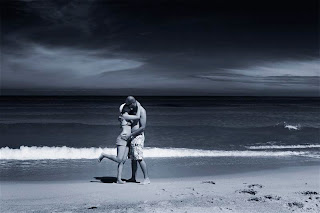Ever wonder if everyone has a favorite commercial? I remember having a favorite commercial many years ago when my wife and I were searching for a name for our first child. It was during the time when the Pantene Shampoo commercials were on the air with the super attractive actress or model doing the Hollywood hair swoosh. Did the commercials work? Actually,I would say, "Yes" as they had an interesting effect on our family.
One model stood out and like many people we asked, “Oh, who is she?” [Interesting note: over a decade later you can Google Pantene commercials and still see questions posted of people asking, “who was the actress in the Pantene commercials?”]As it turns out the actress was named Hunter Tylo and we decided that Hunter would be the name of our soon to be born daughter. Luckily, time allowed for some additional perspective and “Hunter” became her middle name.
Today as consumers watch commercials on financial institutions we often see humor or lifestyle commercials aimed at getting our attention. The goal is to paint a picture they want us to see. Consider credit card reward programs. Why are they giving us something additional? Is it because they have decided that they make too much on the card and want to give you something back? No. BigBanks aren't giving you rewards because they like you. With one hand they give you small rewards while their other hand is collecting much more through fees and interest.
Many people sign up for rewards programs thinking that they will just pay off their balance each month and then sit back and enjoy the “free” stuff that will be coming their way. A small percent of reward program users don’t carry a balance each month and reap the perks of the program. However, another significant portion of the program users do carry a balance and that is where “free” no longer remains “free”. The lesson that “free” doesn’t always mean “free” is a lesson that I can attest to from my own personal experience.
I recall years ago as a newly married couple my wife and I belonged to card reward program. Like many young married couples we had no real clue of how to manage our personal finances. So a reward program seemed like a fantastic idea. We consolidated all our cards onto one card…triple points for balance transfer!
We made the monthly payment each month and when the statement arrived we went straight to the points section to see how many points we had received for the prior month. I recall us being so excited when we had reached ten thousand points. We were now 2nd tier on the rewards grid. We huddled around the computer looking at all the “free” things we could get. We were practically dancing as we ordered a phone with a build in answering machine! [note: in 1993 that was a cool thing to own]
A few months later I switched jobs and started working at a BigBank. I learned about interest rates and the impact of compounding interest. I realized ten thousand points was a ten thousand dollar balance! I looked at how much interest we were paying each month and realized I could have bought three or four phones for what we were paying. Now after almost two decades of working in financial services I think the ad tag line, “what’s in your wallet” is probably one of the saddest inside industry jokes out there. How much are you paying in interest? Paying over 15 percent, 19 percent, 30 percent?
Practical Application:
Practical Application:
Don’t let your members be fooled by slick ads shot in black and white, with an attractive and financially successful looking middle-aged couple. Don’t let your members buy the lifestyle hook being presented that suggests, "If you bank with Big Bank, your life could be like this." We all know that the odds are banking with Big Bank will not make your member look good in an open backed dress. However, I do agree your members should know exactly what’s in their wallet.

The biggest disadvantage of credit cards is that they encourage people to spend money that they don't have. Most credit cards do not require you to pay off your balance each month, so even if you only have $100, you may be able to spend up to $500 or $1,000 on your credit card. While this may seem like 'free money' at the time, you will have to pay it off -- and the longer you wait, the more money you will owe since credit card companies charge you interest each month on the money you have borrowed.
ReplyDelete